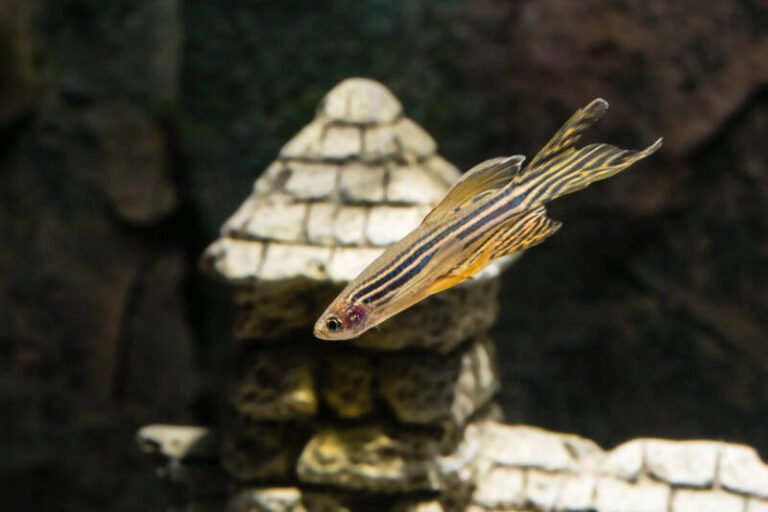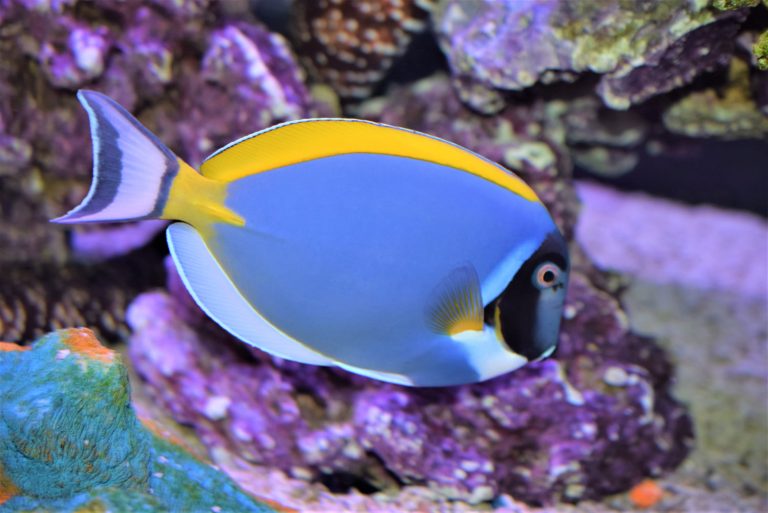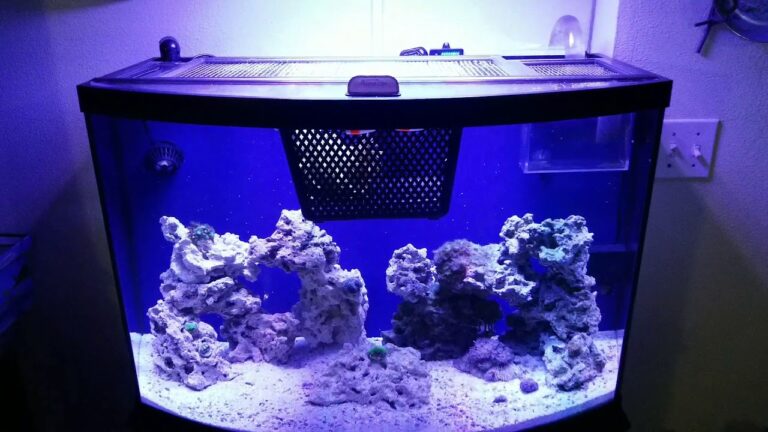How Did Copepods Invade My Tank: Unveiling the Mysterious Intrusion
Copepods likely entered your tank through live plants, rocks, or invertebrates you introduced to the tank. These tiny crustaceans thrive in freshwater and saltwater aquariums, providing natural benefits to the tank ecosystem.
Copepods are small crustaceans that can sometimes be found in aquariums. These tiny creatures may seem like an unexpected addition to your tank, but they typically make their way in through live plants, rocks, or other invertebrates that you introduce to the tank.
While some aquarium owners may view copepods as unwanted pests, they actually play a vital role in maintaining a healthy aquatic ecosystem. Copepods serve as a source of food for many fish and can help control unwanted algae growth. In this article, we will explore how copepods find their way into your tank, their role in the aquarium ecosystem, and whether or not you should remove them.

Credit: www.mdpi.com
Unraveling The Key Factors Behind Copepod Infestations
Have you recently discovered tiny creatures called copepods in your fish tank, and you’re wondering how they got there? Copepods are small crustaceans that can enter your tank through various sources, and it’s important to understand the key factors behind copepod infestations to effectively manage them.
In this blog post, we will explore the potential sources of copepods in your tank and examine the contributing factors that encourage their invasion. So, let’s dive in and unravel the mystery of copepod infestations!
Identifying The Potential Sources Of Copepods In Your Tank
- Live rock and sand: Copepods can hitch a ride on live rock or substrate when you introduce them to your tank. These tiny organisms can easily hide in the crevices and pores of the live rock or burrow into the sand, making it difficult to detect them.
- New additions: Whenever you introduce new fish, corals, or plants into your tank, there is a chance that copepods may accompany them. These little creatures can attach themselves to the surfaces of the new additions or hide in their hiding spots, only to emerge later and populate your tank.
- Water supply: If you use water from a natural source like a lake, river, or well for your tank, copepods may already be present in the water. These organisms can be carried along with the water and find their way into your tank.
- Commercial products: Sometimes copepods may inadvertently be included in commercial products that you add to your tank. Live foods, supplements, or even salt mixes may contain copepod eggs or juveniles, which can then hatch and multiply in your tank.
Examining The Contributing Factors That Encourage Invasion
- Poor quarantine practices: If you don’t quarantine new additions to your tank properly, you increase the chances of introducing copepods and other unwanted organisms. Quarantine procedures should be followed to minimize the risk of copepod infestations.
- Overfeeding: Excessive feeding can lead to an abundance of uneaten food and organic waste in your tank. Copepods thrive in these conditions, as they feed on detritus and microscopic algae. Maintaining a balanced feeding regime can help reduce the likelihood of copepod outbreaks.
- Lack of predators: Copepods are part of the natural ecosystem and typically have predators in the ocean that keep their populations in check. In a closed tank environment, the absence of these natural predators allows copepods to multiply unchecked.
- Poor water quality: Copepods prefer water with high levels of nutrients, as it provides them with a plentiful food supply. A lack of regular water changes, improper filtration, and inadequate maintenance can contribute to poor water quality and create favorable conditions for copepod infestations.
Understanding the potential sources and contributing factors of copepod infestations in your tank is the first step towards effective management. By addressing these factors and implementing proper preventative measures, you can maintain a healthy and balanced aquarium ecosystem. So, let’s explore how you can tackle copepod infestations and ensure the well-being of your tank inhabitants in future blog posts.
Shedding Light On How Copepods Gain Access To Your Tank
Contaminated Live Rock: A Gateway For Copepods
- Live rock, commonly used to create natural habitats in aquariums, can introduce copepods to your tank.
- Copepods may hide in the crevices and porous surfaces of live rock, making it difficult to detect them initially.
- These tiny crustaceans can multiply quickly and populate your tank, especially if the live rock is not properly cleaned or quarantined before being added to the aquarium.
Sneaky Hitchhikers: Copepods On Live Plants And Corals
- Live plants and corals are a popular addition to aquariums, but they can also bring unsuspected copepods along.
- Copepods often attach themselves to the surfaces of live plants and corals, using their small size and adhesive abilities to stay hidden.
- If not thoroughly inspected before adding them to your tank, these hitchhiking copepods can establish themselves and reproduce in your aquarium environment.
The Infiltrating Pond Water: Unwanted Copepods All Around
- Using pond water or water from an outdoor source in your tank may introduce copepods without you realizing it.
- Copepod eggs and larvae can easily be transported through water, even in small quantities.
- If your tank is located near a pond or any outdoor water sources, it’s essential to treat or quarantine the water before adding it to the aquarium to prevent copepod infestations.
Understanding how copepods gain access to your tank is crucial for managing their populations effectively. By being aware of potential sources like contaminated live rock, copepods on live plants and corals, and infiltrating pond water, you can take the necessary steps to prevent or control copepod infestations in your aquarium.
Regular cleaning, quarantining, and careful inspection of any additions to your tank can help you maintain a balanced and healthy aquatic ecosystem for your beloved fish and other tank inhabitants.
Essential Steps To Prevent And Manage Copepod Infestations
Setting up an aquarium can be an exciting but meticulous process. From selecting the perfect tank to carefully curating the inhabitants, every detail matters. However, one pesky issue that can arise is copepod infestations. These tiny crustaceans are often introduced to your tank unintentionally, hitchhiking on live rock, plants, or corals.
To prevent and manage copepod infestations, there are a few essential steps you can take. Let’s delve into each of these strategies and discover how you can maintain a copepod-free tank.
Quarantine Protocol: Safeguarding Your Tank From Contaminated Live Rock
- Before adding any live rock to your tank, it is crucial to implement a quarantine protocol.
- Begin by separating the live rock in a separate tank for a period of time, ideally up to several weeks.
- During this quarantine period, observe the live rock for any signs of copepod activity.
- Regularly check the water parameters, ensuring stable conditions and monitoring for any potential infestations.
- If copepod presence is detected during the quarantine period, it is crucial to treat the live rock accordingly, using appropriate methods such as freshwater or hydrogen peroxide dips.
- Once the quarantine period has passed and no copepod activity is observed, the live rock is ready to be introduced to your main tank, minimizing the risk of copepod infestations.
Sterilization Techniques: Ensuring Copepod-Free Live Plants And Corals
- When it comes to live plants and corals, it is essential to ensure they are copepod-free before introducing them to your tank.
- Before purchasing, thoroughly inspect the plants and corals for any visible signs of copepods or other pests.
- If possible, conduct a freshwater dip to remove any potential copepod larvae or eggs.
- Another effective sterilization technique is to use a coral dip solution specifically designed to eliminate any hitchhikers, including copepods.
- Prioritize purchasing plants and corals from reputable sources that employ effective quarantine and sterilization protocols.
Water Source Selection: Strategies To Prevent Copepod Infiltration
- The source of your tank’s water can greatly impact the likelihood of copepod infestations.
- Avoid using water from natural sources such as rivers, lakes, or the ocean as they may contain copepod larvae.
- Opt for high-quality, filtered water or consider using reverse osmosis (ro) water, which helps eliminate potential copepod contaminants.
- If you prefer using tap water, be sure to use a water conditioner that neutralizes harmful substances, including copepod larvae.
- Regularly monitor your tank water for any signs of copepod activity, especially after water changes or additions.
By following these essential steps, you can significantly reduce the risk of copepod infestations in your tank. Implementing a quarantine protocol for live rock, sterilizing live plants and corals, and selecting the right water source are all effective strategies to maintain a copepod-free environment.
By taking preventative measures, you can focus on enjoying the beauty of your aquarium without the hassle of copepod invasions.
Frequently Asked Questions For How Did Copepods Get In My Tank
How Do Copepods Get Into My Tank?
Copepods can enter your tank through live rock, introduced with new animals or plants, or through water transfer.
Are Copepods Harmful To My Tank?
Copepods are generally beneficial as they help maintain water quality, provide food for fish, and do not harm other tank inhabitants.
Can Copepods Multiply Rapidly In My Tank?
Yes, copepods reproduce quickly in favorable conditions, but their population usually remains in balance with the available food source.
How Can I Control Copepod Population In My Tank?
Controlling copepods can be challenging, but feeding less, removing excess detritus, and using natural predators like mandarin gobies can help maintain population levels.
Conclusion
It is crucial to address the presence of copepods in your tank as they can quickly multiply and become overwhelming. To prevent their invasion, start by monitoring the water quality and ensuring a balanced ecosystem. Regularly clean the tank, remove any decaying matter, and maintain proper filtration.
Introducing fish or other natural predators can also help control copepod populations. Additionally, avoid overfeeding your tank inhabitants, as excess food may contribute to copepod growth. Remember, copepods can hitchhike on live plants and rockwork, so thoroughly inspect and quarantine any new additions before introducing them to your tank.
By maintaining a healthy and well-maintained aquatic environment, you can prevent or manage copepod infestations effectively. Keep in mind these tips to ensure a thriving and balanced ecosystem for your tank inhabitants.






